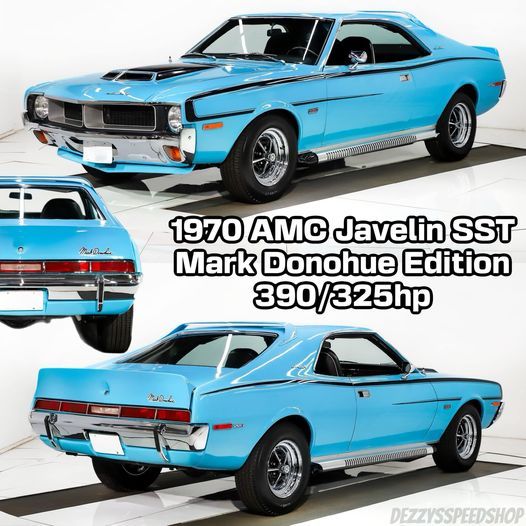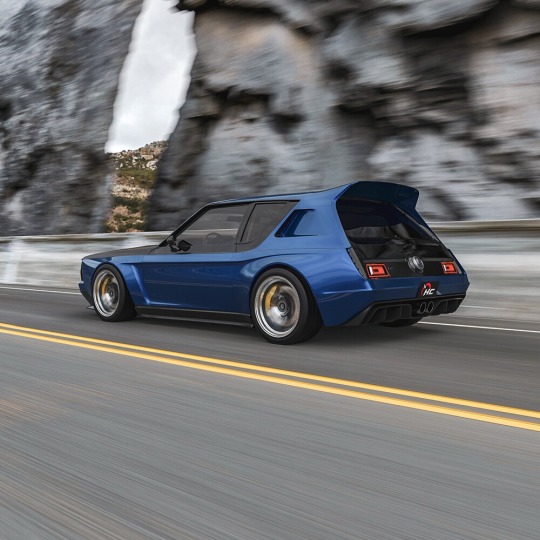Text
youtube
According to the report from ABC 7 in Chicago, the driver of the sedan tried taking a turn at a "high rate of speed" and lost control. The family's front lawn apparently created the perfect natural car ramp to launch the car through the air, into the garage, and settling onto one of the family's Ford F-150 pickups.
4 notes
·
View notes
Text
This Ride's Making Us Hungry
Most people have heard of the wiener mobile before. Well, this is that car's cousin. Someone completely reworked their entire truck to make it look like a giant hamburger, and it's pretty awesome. In fact, it's bordering on being more so a piece of art than an actual vehicle. They even added little details li splashes of ketchup, onions, and a slice of cheese on the top of the hood.

In addition, we're sure that the top bun provides some shade on sunny days. Although, we can't imagine this thing handles very well, nor does it look like it's fun to park.
13 notes
·
View notes
Text
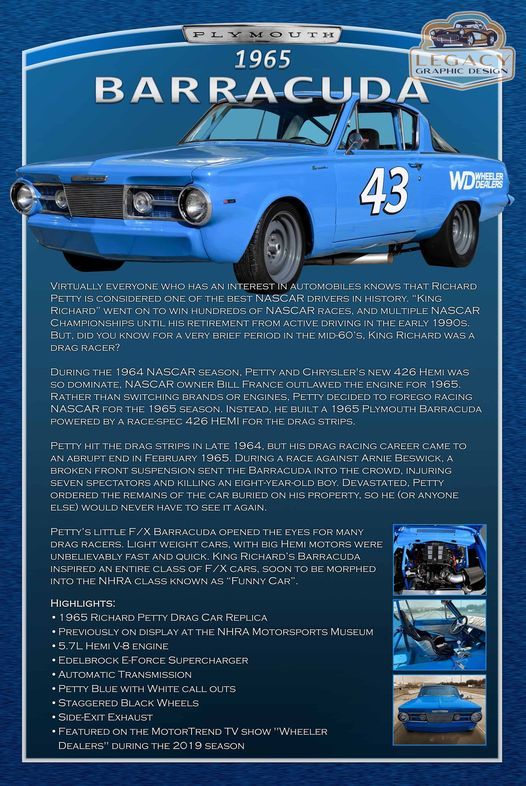
Richard Petty is considered one of the best NASCAR drivers in history. But did you know for a very brief period in the mid-60’s, King Richard was a drag racer?
On February 23, 1964, the Chrysler 426 Hemi made its first appearance at the Daytona 500. The engine was light years ahead of the rest in terms of technological advancement, and the MOPARs finished 1st, 2nd, and 3rd with Richard Petty winning the race.
Petty and Chrysler's new 426 Hemi so dominated the 1964 NASCAR season that NASCAR owner Bill France outlawed the engine for 1965. Rather than switching brands—or engines—Petty decided to forego racing NASCAR for the 1965 season. Instead, he built a Hemi-powered Barracuda for the dragstrips.
Petty ran the car at the NHRA Spring Nationals June 6, 1965. But, by June of 1965 Bill France had begun working on rules to allow the big 426 Hemi back into NASCAR racing. The Pettys and Chrysler/Plymouth had won the war of nerves! The 426 Hemi was soon to be in full production for six more years and used in NASCAR sanctioned racing for several more years after that. Richard soon gave up drag racing the stout little Barracuda named “43 jr” and the Pettys began preparing for the 1966 NASCAR season with a Hemi Powered Plymouth.
The big question from this story is what would have happened if the “43 jr” Barracuda drag race car had never been built? The 426 Hemi had been engineered to race in NASCAR competition. If the Hemi could not be used in NASCAR would Chrysler have continued to develop and build it, probably not. But, since NASCAR required engines to be build and produced in publicly sold vehicles, the “Street Hemi” was produced, and the rest is history! Richard Petty’s brief excursion into drag racing, in 1965, probably saved the 426 Hemi.
39 notes
·
View notes
Text

1948 Mercury Templeton Saturn
A Unique One-Off Vehicle
62 notes
·
View notes
Text

Chrysler Imperial - Frank Sinatra edition.
Exterior paint in Glacier Blue Crystal (an obvious nod to Sinatra’s nickname, Ol’ Blue Eyes) with matching blue upholstery in Kimberly velour or Corinthian leather, a unique center console that housed 16 casette tapes of the singer’s favorite music, and discrete gold-toned exterior badges. All the appointments were said to be approved by Sinatra himself, who was a bit of a car guy.
39 notes
·
View notes
Text

I felt it my absolute duty to the auto muscle car enthusiasts to know this... Thank me later! Beaumont was a make of mid-sized automobiles produced by General Motors of Canada from 1964 to 1969. These cars were based on the Chevrolet Chevelle, but the line had its own logo and nameplate, and was neither marketed nor actively sold in the United States. Its logo consisted of an arrow, similar to that of Pontiac, but with a maple leaf to signify its dual heritage from both sides of Lake Ontario.
This SD 396 version of the Beaumont built in 1966, in particular with 4 speed manual transmissions are exceedingly rare, as only 41 were ever built. Car pictured is a 1967.
94 notes
·
View notes
Text

1962 Pontiac Tempest
In the early 1960s, all major U.S. carmakers introduced compact models. Chevrolet had the Corvair, Ford had the Falcon, Plymouth had the Valiant and Pontiac had the Tempest. In most cases, those compact models were only smaller versions of bigger cars, sharing design cues and mechanicals. However, Pontiac went a different route and presented one of the most advanced and interesting American cars of the era. The new Tempest had independent suspension at a time when all cars used a live rear axle. Also, it featured an economical four-cylinder engine, which was a cut-down V8 when all competitors had six cylinders. In addition, the Tempest used a rear-mounted gearbox, the transaxle design, which was unheard of at the time. Today, only the most expensive Gran Turismo Coupes like the Aston Martin or Ferrari use this system. But in the 1960s, Pontiac was the only production model with this solution.

1962 Pontiac Tempest
Additionally, the Tempest didn’t have a conventional driveshaft to connect the engine in the front with the transmission in the back. Instead, it used torque tubes with cables inside. This gave the Tempest an almost ideal weight distribution and perfect handling. It even had enough room for six passengers thanks to the omission of the transmission tunnel. So, compared to the rest of the compact car field, the 1962-63 Pontiac Tempest was from another planet. During its lifespan, Pontiac sold over 200,000 Tempests, making this model a success. But in 1964, the company introduced a bigger, much more conventional Tempest. Despite its revolutionary mechanics, perfect driving dynamics and motorsport success, most people forgot about the first-generation Tempest. Today, only diehard Pontiac fans remember it. In fact, you will rarely see it in car shows and the parts are scarce.
29 notes
·
View notes
Text

Pontiac Firebird Sprint
The Firebird is one of the most popular, well-known Pontiac nameplates ever. From 1967 to 2002 it was the muscle car edge of the company. However, there is one Firebird the automotive public forgot about, lost in the corridors of time all these years. That is the 1967 to 1969 Pontiac Firebird Sprint. Pontiac presented the Firebird in 1967 as the answer to the Ford Mustang and the Chevrolet Camaro. Since it was the height of the muscle car era, the public paid attention to the high-powered V8 models. However, Pontiac managed to sneak an interesting model into its lineup. The secret of the Firebird Sprint was the engine. It was a 250 CID straight-six with a single overhead camshaft. It produced 215 HP in the 1967-68 model years and 230 HP in 1969.
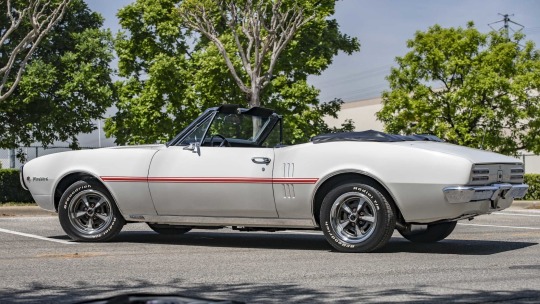
Pontiac Firebird Sprint
Compared to the 350 and 400 CID V8, this was not impressive. But the Sprint six had serious torque, low weight, and revved happily to 6,000 rpm. Compared to nose-heavy V8-powered models, the Sprint was light, which provided balanced handling and great driving dynamics. In the days of V8 monsters, a six-cylinder Firebird had an almost European feel. Unfortunately, not many people understood this model. Despite the modest price and unique characteristics, they only sold a few thousand in the three-year production run. Today, the Firebird Sprint is a rare sight in the six-cylinder muscle car category.
27 notes
·
View notes
Text

Pontiac Grand Ville
The early 1970s were good times for the Pontiac Motor Division. During the 1960s, the company re-imagined itself, becoming a leader in several car model segments with high annual production. In 1971, Pontiac decided to enter the luxury car segment by introducing a new, top-of-the-line model called the Grand Ville. At that time, the Bonneville was Pontiac’s premium model, and it did the job well. With several body styles available, a nice lineup of engines, and lots of optional extras, the Bonneville sold reasonably well. In fact, it was considered a wise choice in the luxury car field. However, Pontiac wanted something closer to the Cadillac or Oldsmobile than to the Chevrolet Caprice. So they presented the Pontiac Grand Ville using a Bonneville platform and most of the sheet metal, but with a few trim details to differentiate the two models.

Pontiac Grand Ville
The Bonneville stayed in production, but they downgraded it below the Grand Ville. Pontiac decided to offer a 400 HP V8 engine as standard and a 455 HP as an optional engine, as well as a high level of equipment. But for those who wanted something extra, Pontiac offered a leather interior, climate control, and a heavy-duty suspension. They also included an AM/FM radio, and even adjustable brakes and accelerator pedals. They made the Grand Ville in a two or four-door hardtop, as well as a luxury convertible. However, the market didn’t respond all that well, so sales figures were low. At the same time, the energy crisis hit the U.S., so those big gas guzzlers fell out of favor with most customers. They discontinued production of the Grand Ville in 1975. This returned the Bonneville to the top spot in their main model lineup.
18 notes
·
View notes
Text

Buick Grand Nationals
Buick Grand Nationals at ASC McClaren awaiting GNX conversions
29 notes
·
View notes
Text

1930 L-29 Cord
Once-abandoned 1930 L-29 Cord,
Before and after restoration.
299 notes
·
View notes
Text
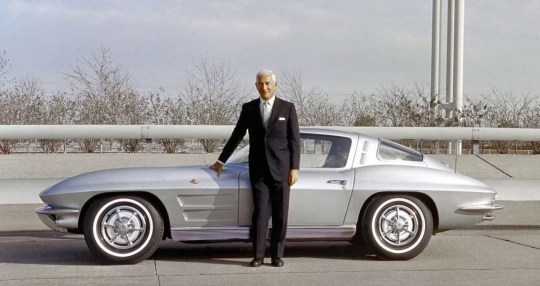
This Day In History, April 23, 1996 Zora Arkus-Duntov, Belgian-American automotive engineer, known as "the Father of the Corvette", dies at 86
Zora Arkus-Duntov (December 25, 1909 – April 21, 1996) was a Belgian-born American engineer whose work on the Chevrolet Corvette earned him the nickname "Father of the Corvette." He is sometimes erroneously referred to as the inventor of the Corvette; that title belongs to Harley Earl. He was also a professional racing driver, appearing at the 24 Hours of Le Mans four times and taking class wins in 1954 and 1955.
Arkus-Duntov joined General Motors in 1953 after seeing the Motorama Corvette on display in New York City. He found the car visually superb, but was disappointed with what was underneath. He wrote Chevrolet chief engineer Ed Cole that it would be a pleasure to work on such a beautiful car; he also included a technical paper which proposed an analytical method of determining a car's top speed. Chevrolet was so impressed, engineer Maurice Olley invited him to come to Detroit. On May 1, 1953, Arkus-Duntov started at Chevrolet as an assistant staff engineer.
Shortly after going to work for Chevrolet, Arkus-Duntov set the tone for what he was about to accomplish in a memo to his bosses. The document, "Thoughts Pertaining to Youth, Hot Rodders and Chevrolet", laid out Duntov's views on overcoming Ford's lead in use by customizers and racers, and how to increase both the acceptance and the likelihood of success of the Chevrolet V8 in this market. In 1957 Arkus-Duntov became Director of High Performance Vehicles at Chevrolet. After helping to introduce the small-block V8 engine to the Corvette in 1955, providing the car with much-needed power, he set about showcasing the engine by ascending Pike's Peak in 1956 in a pre-production car (a 1956 Bel Air 4-door hardtop), setting a stock car record. He took a Corvette to Daytona Beach the same year and hit a record-setting 150 mph (240 km/h) over the flying mile.[citation needed] He also developed the famous Duntov high-lift camshaft and helped bring fuel injection to the Corvette in 1957. He is credited with introducing the first mass-produced American car with four-wheel disc brakes.
A conflict arose between Duntov and Chevrolet chief designer Bill Mitchell over the design of the new C2 Corvette "Sting Ray" model. Mitchell designed the car with a long hood and a raised windsplit that ran the length of the roof and continued down the back on a pillar that bisected the rear window into right and left halves. Duntov felt that the elongated hood interfered with the driver's view of the road ahead, and the rear pillar obscured the driver's view rearwards. The split rear window was widely criticized, and a one-piece backlite was put in its place the next year.
69 notes
·
View notes

